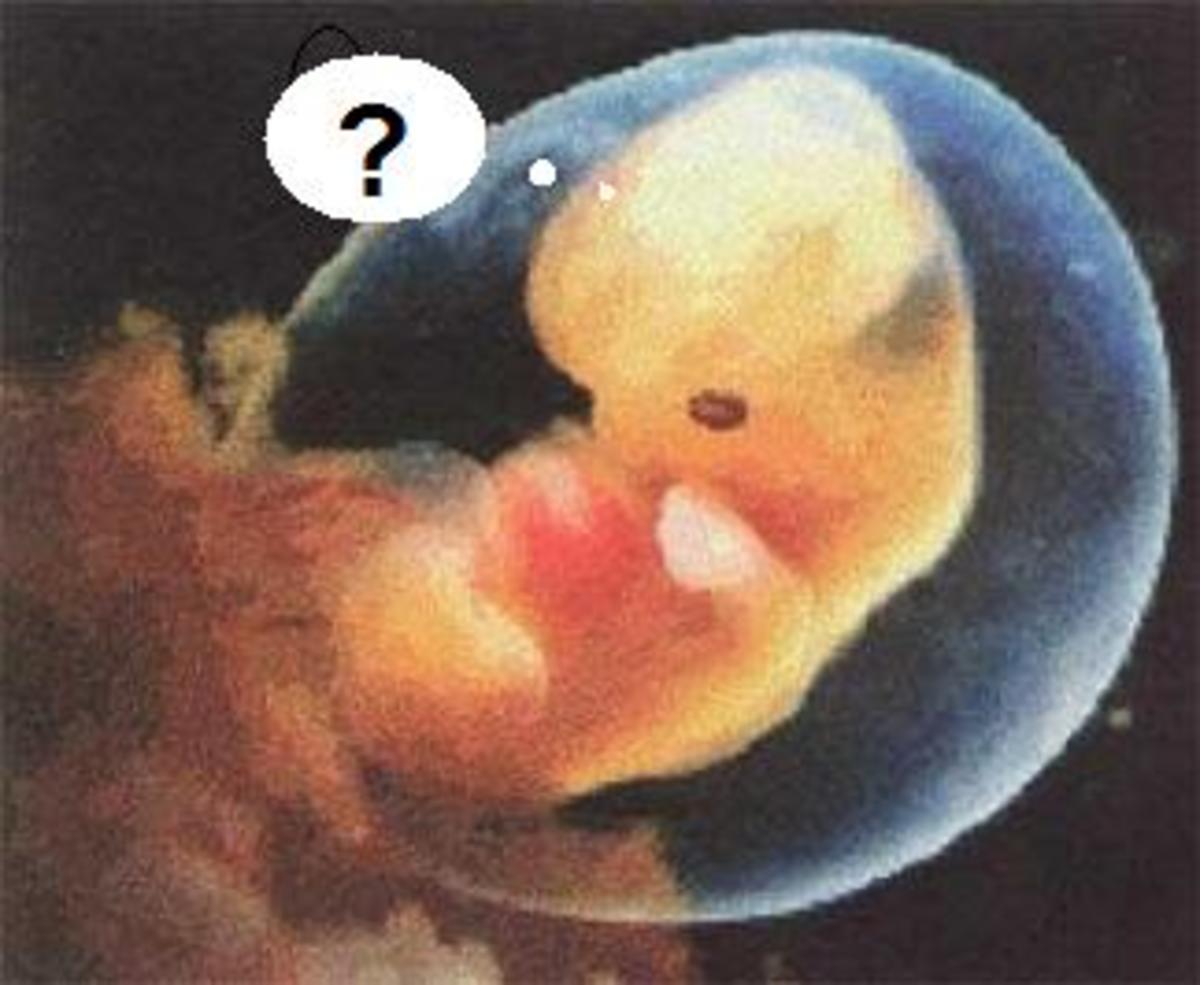
10 Basic Questions about Life: Exploring Existence
Life is amazing. From the tiniest speck to the biggest creature, life is all around us. But how does it all work? This article looks at some basic, yet essential, questions about life.
What is Life?
Life is the ability to survive and grow. Living things adapt, grow, and reproduce. They need energy to do these things. This is basic to every living being, and quite amazing! In short: a thing alive needs these things, if they don’t have, well, not a living being then!
This definition, though, is tricky! Some things that we see living in a way do not seem to have every trait as such. Scientists are always studying and finding out more and it is a tough field of study!
How Did Life Begin?
Life arose slowly, in stages. Non-living molecules combined to create the first living things. The best idea scientists have about how this happened is it likely started in warm seas. This whole beginning of life process likely lasted billions of years! This is very long and very important question as it makes life as we see it, today!
Imagine basic molecules connecting in sequences in the early oceans billions of years ago—amazing! Where these first forms started may still be a mystery today!
The Role of DNA: Unraveling the Code
DNA holds instructions to create all living things. It's like a detailed instruction book for the whole body. This instruction book is written in special molecular language. So special!
DNA has instructions on everything to how to form all organisms. DNA plays a huge role in many life processes. This special molecule is absolutely fascinating.
Evolution: A Constant State of Change
Life changes slowly over time. Traits, the details that help each thing adapt and survive. Change is always there—adaptation helps! Over long times and across several generations of life, there is a noticeable change.
The changes we see are driven by forces, which are like special recipes. Mutations and natural selections add in traits over very long times to adapt a species. Natural selection—the fittest, with better genes will always succeed over time—nature is fascinating.
Levels of Organization in Living Things
Life works in complex layers. From small things like molecules to bigger and bigger things, all working together to form the whole picture! It’s so complex!
The list of life's organizational layers is long and detailed! From a single atom to our earth's biosphere.
These are like the layers in a complex pizza, working together. They have very specific roles!
Energy in Living Organisms: Fueling the System
Energy is the fuel of life. Photosynthesis in plants creates this, which helps feed living beings and keeps us alive! Amazing and critical processes!
Animals, we eat food and use our own systems to get the energy, keeping ourselves alive. This fuels activities like running, swimming, even sleeping—life!
7 Wonders of Biodiversity: Triumphs and Challenges
Biodiversity is the amazing variety of life on Earth. From tiny insects to giant whales, this variety is essential to keep the planet healthy. But, how can we protect this beauty? Let's explore this crucial topic!
Biodiversity and Ecosystem Health
The Earth's ecosystems depend on biodiversity. This means everything from the small creatures in the soil to the big mammals living in the jungle is part of the whole thing, like tiny puzzles that all add to a huge picture.
A healthy ecosystem needs different kinds of living things. Plants help make air breathable, animals keep the environment in balance. Each living thing is like a special tool in the great machinery of nature.
Without this variety of species, it becomes really tricky to maintain things properly!
Threats to Biodiversity
Pollution, cutting down forests, and climate change threaten this amazing variety of life. This harms biodiversity and changes how nature functions as a whole.
These changes disrupt everything! Humans need to take extra steps for a healthy life, environment. A change in one area of the ecosystem will influence others too!
The negative effect humans cause, like the air becoming unhealthy and changing temperature are just some effects that show humans' involvement!
The Importance of Conservation
We need to protect biodiversity! Protecting biodiversity is very important—for people and for everything on Earth! It keeps our world a healthy place to live.
Careful choices for nature conservation and sustainability, are essential!
It ensures a good environment, keeps our world strong, ensures the health of both the land and our lives on the planet!
Ethical Considerations in Life Sciences
Scientists do amazing things. However, using technology on life, like engineering or genetically altering a thing requires great thought, consideration and rules! It can influence living beings and ecosystems.
People often have strong feelings about these kinds of activities! Understanding other's viewpoint is essential to balance science with values!
Scientists need to think through potential effects before they go ahead!
The Future of Life Sciences
The future may hold some interesting breakthroughs, developments—these improvements may greatly help human beings live better lives. They could lead to better solutions and health treatments. However, understanding how our work influences everything is very important!
It’s essential that any advances help everyone. Thinking of how to solve global problems with care will be helpful and crucial!
Challenges and Opportunities in the Future

Source: workable.com
Balancing new technology with the environment can seem tough sometimes. However, scientists and people can make the effort and figure out better ways. It's worth all the effort.
By combining smart solutions with effort from both sides, both humans and nature can have a better future together!

Source: ellow.io
Ethical Stewardship
People are essential in maintaining life's great variety. Responsible care is essential—doing what we can is vital!
Understanding your involvement in conserving and nurturing this variety of life is essential!
Understanding Life's Complexities: 5 Key Aspects
Life is intricate. Understanding it involves exploring its key elements. Let's explore these key elements to a better understanding.
Defining Life
Defining "life" is challenging. Living things show specific features: growth, response to the environment, and the ability to reproduce. All have features that are important.
Cells, basic components of organisms, also have unique tasks! Cells share common tasks of every living thing, and that makes them very interesting to study!
These characteristics help distinguish living beings from non-living ones! These aspects, put together, help in our attempt at defining life as we know it.
Origins and Evolution
Life started very slowly! This amazing start began from small, simple molecules forming complex patterns of building blocks, likely over billions of years. It has been changing, developing over very long timescales, gradually creating new life.
We need time for great change to evolve! Early forms of life gave rise to the amazing diversity of life around us now!
Natural selection is how this change occurs, making life fitter and more adjusted to their environments! It's a continuous process!
Genetic Code (DNA)
DNA holds the instructions to create everything living. It's like a secret code for each creature, giving information for building a whole living thing. Every trait a thing shows has the coded instruction!
The genetic code shapes the nature of every living thing!
Understanding this amazing code can improve healthcare, provide ways for more care and solutions to problems!
Interdependence of Living Systems

Source: ling-app.com
All living things rely on others in a delicate balance! Everything relies on another thing. Everything depends on each other, from the tiniest organisms to the biggest animals. Living things work together!
The living world forms one beautiful interconnecting network! This relationship between living beings is critical for the health of the ecosystem as a whole!
This interdependence emphasizes the significance of carefully balancing natural elements. This careful balancing is key!
Conservation Ethics
Protecting biodiversity is extremely crucial. Maintaining a healthy variety of life ensures everyone can stay balanced—both living and non-living. It is a huge responsibility! Responsible ways to manage Earth’s variety is essential for both nature and all its elements!
Ethical thinking in all efforts involving biodiversity is a responsibility for a long-term, healthy living on earth! It’s all connected. Understanding ethical considerations for how we interact with life forms helps balance conservation. It influences decisions on how we interact with all things living, creating more balance.
Exploring the Fundamentals of Biology: 6 Core Principles

Source: googleusercontent.com
Biology studies life, from the smallest parts to the largest ecosystems. Understanding these fundamental principles helps explain life's amazing diversity.
Cellular Basis of Life
The cell is the basic unit of life. Cells have different tasks depending on the role of the organism. Each organism is composed of many cells working together.
Many types of cells work together to build tissues, organs, and systems in a body.
Understanding the function of cells reveals fundamental concepts.
Genetics and Inheritance
Genetic information dictates traits and is passed between generations. The passing on of characteristics, traits, is from parents to their offspring is a central process in the cycle of life. This knowledge helps improve life and living.
Genes contain hereditary information passed to next generations! These inherited features ensure certain patterns are followed over time in traits.
Heredity influences everything from physical features to internal processes of a living thing! This passing on information ensures life's continuity.
Evolution and Adaptation
Life on Earth constantly evolves. Species adapt over long periods to better suit their surroundings. Organisms evolve to best match their conditions over time.
Over very long time periods, adaptation results in change. Natural selection determines the traits favored for survival.

Source: saymedia-content.com
Evolution by adaptation results in species fitting better to their surroundings over many, many generations.
Energy and Metabolism
Energy fuels life's processes. Metabolism helps in the use and exchange of energy! Different processes handle getting energy.
All life forms need energy to exist!
Organisms obtain and use energy in varied methods, each very essential for functioning! These diverse ways support all processes.
Biological Systems and Diversity
Organisms in a place, ecosystem are linked and work together in different ways! This network sustains the whole place! Ecosystems have organisms interconnected to keep everything going in the right balance.

Source: ssrecruitment.com
Understanding their relationship and their impact on one another will help maintain a good, stable environment! This knowledge allows us to understand nature’s balance more efficiently and accurately!
Diverse organisms—with their amazing roles in these complex relationships—make the environment robust! This biodiversity keeps the natural world dynamic and resilient!
Conservation and the Environment
Conservation is important to protecting biodiversity. This ensures sustainability of the natural world! Protecting environments and conserving nature helps to keep ecosystems strong, and protects the natural patterns within their places.
Understanding biology's principles is essential for nature's protection!
Protecting these interactions means we protect ourselves too! Responsible human actions contribute to the preservation of this beautiful world!
9 Essential Concepts in Biology
Understanding biology involves grasping fundamental concepts. These concepts, from basic life characteristics to complex ecosystem interactions, reveal the intricate interconnectedness of life.
Defining "Life"
Life has specific characteristics. Growth and reproduction are key features. Living organisms interact with their surroundings, demonstrating complex processes, adapting to changing environments! The specific characteristics used to identify a thing as 'alive' form a definition. Recognizing life's characteristics is crucial for our understanding.
Organization of Life
Living things exist in levels, starting from simple atoms. The organizational levels highlight a remarkable design that we can understand to use science in many situations! At different organizational levels—molecules, cells, tissues, organs—things interact with one another, playing very specific roles in life on Earth. This organization provides an explanation.
Growth and Development
Growth leads to increased size and complexity in a thing's form. Organisms evolve over time. Different growth processes differ, depending on how much it grows over time. Every species has its growth steps.
Understanding growth and development pathways in species offers many useful pieces to help better understand living things. This knowledge has benefits to many important applications.
Reproduction and Inheritance
Organisms produce more of their own kind! Traits are passed through generations, ensuring similarities in a thing! Reproduction processes vary, depending on the being. Inheritance carries information passed through these stages, showing what characteristics and qualities will continue.
Understanding inheritance shows connections and similarities between generations and explains many variations! Understanding this is central in the biology of the different beings.

Source: amazonaws.com
Response to the Environment
Living things interact with the environment around them. Their responses lead to changes. Organisms change in various responses according to changing conditions in their surroundings, adjusting behaviors to survive and adapt in a specific environment. This response depends on their biological nature. Living organisms often respond to their environments.
Energy Flow
Life processes need energy. Organisms use different processes—for example, photosynthesis in plants and food intake in animals—to get it. Organisms show the process needed for life through their very existence, with variations depending on the species of organisms.
All things, from smallest to largest, rely on a continuous flow of energy in different, interconnected forms. Energy helps drive the vital functions in all organisms!
Evolution and Adaptation
Life adapts and changes over very long times. Species alter their traits to improve survival, in new environments, according to different needs! Survival is greatly helped with these traits and adaptation to different conditions helps species endure! Changes in species occur according to this adaptation!
Natural selection shapes which traits improve chances of living over long periods!
Biodiversity
Living things come in amazing diversity. Every organism has its distinct characteristics! The diversity supports healthy and strong ecosystems, adding amazing colors, textures and richness. Every type has a special function, and all add to nature's overall beauty. Different organisms perform different, crucial functions in the environment.
Biodiversity is a result of amazing complexity over millions of years of evolution.
Environmental Interactions
Living beings interact with their environment constantly. These interactions support survival, affect each other, influencing every part of a specific habitat. Each life has its essential relationships with elements that support life! Animals and plants constantly adjust their habits and living processes to survive.
Beyond the Basics: Further Exploration of Life's Questions
Exploring life's complexities goes beyond the basics. Deeper questions uncover fascinating intricacies. This journey explores life's intricacies and explores important emerging ethical concerns.
Delving Deeper into the Origins of Life
Understanding life's start is complex! The origin of life from non-living molecules remains a mystery. Research focuses on how these simple molecules formed intricate structures.
Scientists search for clues in early Earth conditions—how molecules combined—searching for answers to a great mystery of the world! The process continues to intrigue!
This fundamental question shapes our view of life itself! Unlocking these origins sheds light on how life's incredible diversity emerged.
Exploring the Complexities of DNA
DNA is a key to understanding life. DNA's structure—a complex, double helix-like structure—holds information and controls processes, functions in every organism on Earth, guiding how each develops!
It's like a coded language governing every detail. Each cell depends on specific, carefully constructed codes in its operation and functions! Each unique DNA combination determines every form, every process, every living form and its existence!
Understanding its complexity is vital for numerous fields—such as medicine, health, etc—improving lives and influencing different aspects!
Understanding the Ethical Dimensions of Biotechnology
Biotechnology brings new opportunities. Using biological techniques—like altering organisms or their genetic make-up—brings great promise yet poses dilemmas. Ethical decisions often hinge on careful consideration of its influences.
There are dilemmas in many fields where choices in technology need careful thought about possible effects and results. Ethical dilemmas arise from applying biology tools—considering how their use might affect people.
New scientific developments bring advancements to healthcare yet present considerations of a wider human concern, prompting dialogues.
The Interplay Between Science, Ethics, and Society
Science and society intertwine to explore ethical dilemmas in new discoveries. Discussions lead to policies affecting daily lives. Policies and rules form based on decisions about these very important areas! The discoveries lead to great new developments. The results greatly influence different facets of our daily life.
The ethical responsibility goes further and into societal choices, impacting daily life. We make complex decisions to shape ethical policy regarding new and arising topics!
Societal needs and perspectives are factored into decisions regarding science ethics! These aspects form ethical boundaries that shape societal decisions.
Advancing Life Sciences for a Sustainable Future
Life sciences offer solutions to environmental challenges. Innovations in biology provide solutions—reducing waste and supporting environmental conservation efforts, for instance. Improvements can contribute in many beneficial ways for our earth!
Further development contributes to better management of resources in relation to how humanity's impact on the planet plays out! Better techniques help manage how much pollution there is!
These improvements contribute toward sustainability by supporting solutions like finding alternatives to our environmental needs!
Considering the Philosophical Implications of Life
Life's significance in different viewpoints—biological to philosophical perspectives, for example, influence our overall viewpoint. These various opinions enrich how people consider different and complicated ideas regarding the origin and impact of life. This topic explores and adds in considerations when we talk about what 'life' means and the value associated with its many amazing forms!
Philosophical perspectives deepen the study by including elements of meaning in life and what life means, and these considerations provide broader contexts for study and appreciation for different views.
Ongoing Discoveries and Mysteries of the Biological World
Ongoing scientific research constantly unfolds new details and highlights continued questions. Further biological mysteries will undoubtedly surface as research uncovers more unknowns about life.
Continual efforts by scientists push understanding of biological life forward—unveiling and unraveling unknown mysteries regarding life's processes and wonders. This constant quest contributes and broadens our scientific understanding and knowledge—a fascinating cycle of discovering the complex wonders that are life and the incredible world around us!



